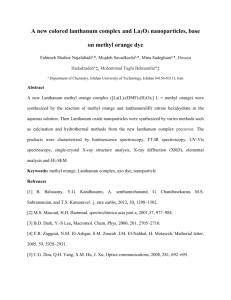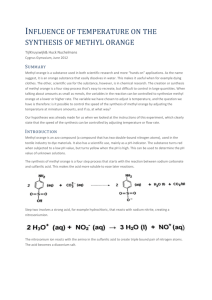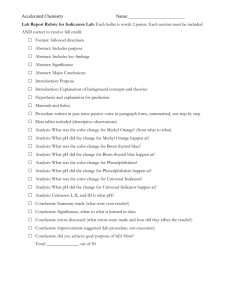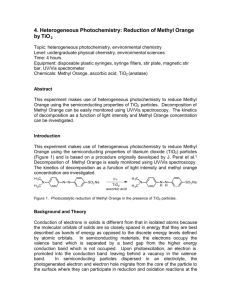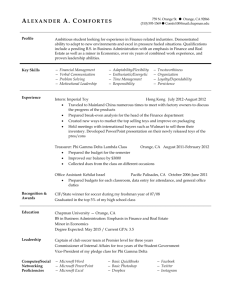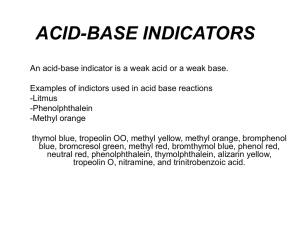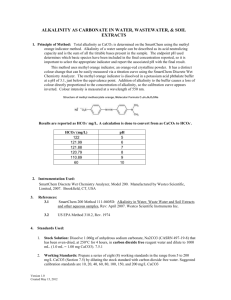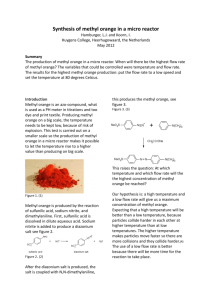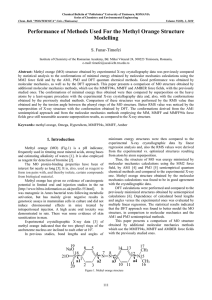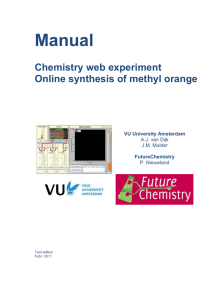4. Heterogeneous Photochemistry: Reduction of Methyl Orange by
advertisement
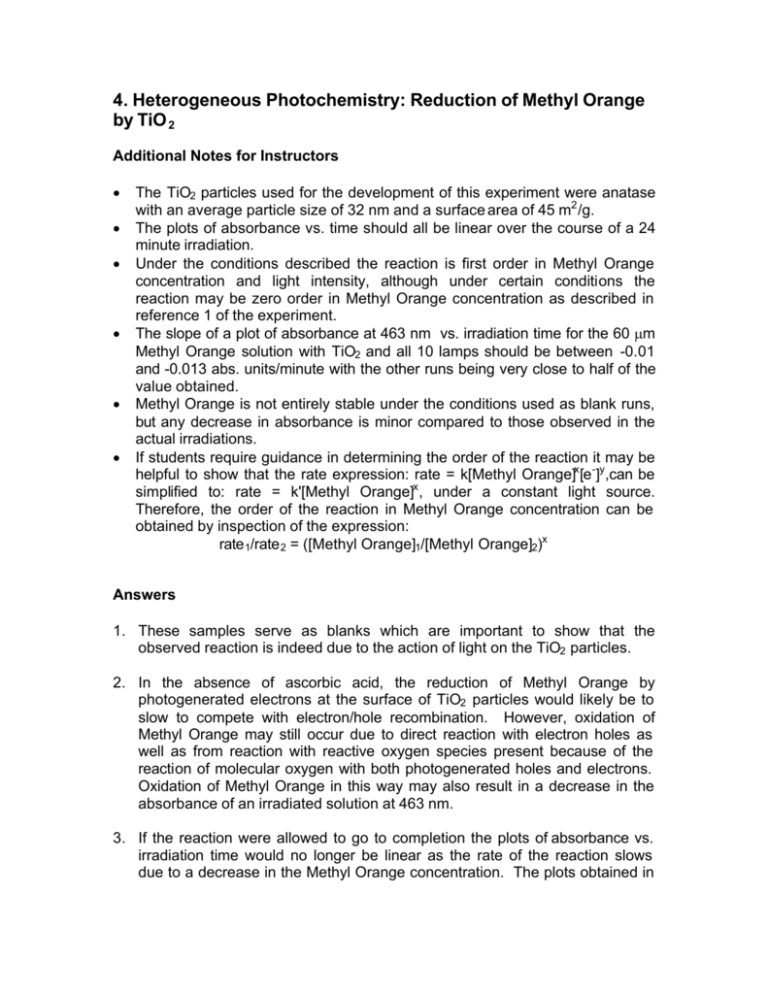
4. Heterogeneous Photochemistry: Reduction of Methyl Orange by TiO 2 Additional Notes for Instructors • • • • • • The TiO2 particles used for the development of this experiment were anatase with an average particle size of 32 nm and a surface area of 45 m2 /g. The plots of absorbance vs. time should all be linear over the course of a 24 minute irradiation. Under the conditions described the reaction is first order in Methyl Orange concentration and light intensity, although under certain conditions the reaction may be zero order in Methyl Orange concentration as described in reference 1 of the experiment. The slope of a plot of absorbance at 463 nm vs. irradiation time for the 60 µm Methyl Orange solution with TiO2 and all 10 lamps should be between -0.01 and -0.013 abs. units/minute with the other runs being very close to half of the value obtained. Methyl Orange is not entirely stable under the conditions used as blank runs, but any decrease in absorbance is minor compared to those observed in the actual irradiations. If students require guidance in determining the order of the reaction it may be helpful to show that the rate expression: rate = k[Methyl Orange]x [e-]y ,can be simplified to: rate = k'[Methyl Orange]x , under a constant light source. Therefore, the order of the reaction in Methyl Orange concentration can be obtained by inspection of the expression: rate 1/rate 2 = ([Methyl Orange]1/[Methyl Orange]2)x Answers 1. These samples serve as blanks which are important to show that the observed reaction is indeed due to the action of light on the TiO2 particles. 2. In the absence of ascorbic acid, the reduction of Methyl Orange by photogenerated electrons at the surface of TiO2 particles would likely be to slow to compete with electron/hole recombination. However, oxidation of Methyl Orange may still occur due to direct reaction with electron holes as well as from reaction with reactive oxygen species present because of the reaction of molecular oxygen with both photogenerated holes and electrons. Oxidation of Methyl Orange in this way may also result in a decrease in the absorbance of an irradiated solution at 463 nm. 3. If the reaction were allowed to go to completion the plots of absorbance vs. irradiation time would no longer be linear as the rate of the reaction slows due to a decrease in the Methyl Orange concentration. The plots obtained in this experiment appear linear because of the low conversions of Methyl Orange which occurs over 24 minutes of irradiation. 4. An irradiation at 50% light intensity of a 30 µM solution of Methyl Orange with TiO2 should have a rate 25% of that obtained with 100% light intensity and 60 µM Methyl Orange.
